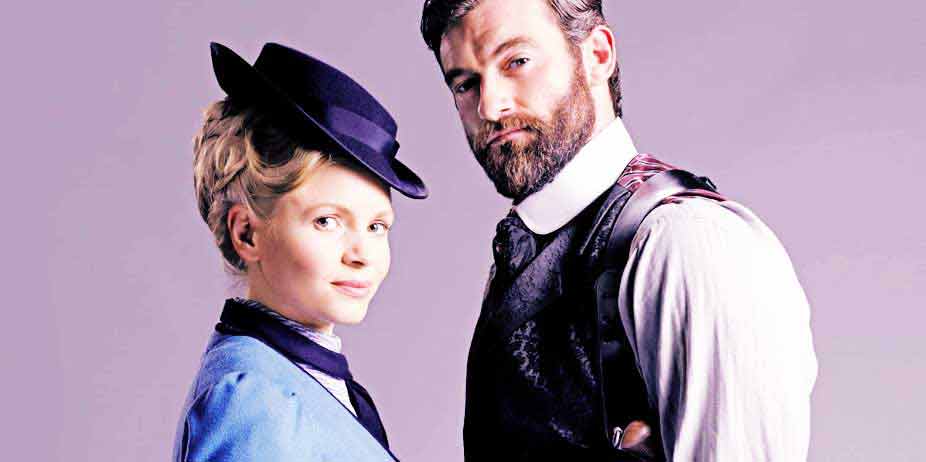
Miss Scarlet and the Duke, Season One (2020)
A clever, aesthetically pleasing and mostly family-friendly Victorian mystery series, Miss Scarlet and the Duke matches a determined woman against a hardened Scotland Yard inspector, as she struggles to keep her father’s detective agency afloat after his untimely death. The late Mr. Scarlet (Kevin Doyle) has drunk up most of their money, leaving his daughter Eliza (Kate Phillips), strapped for cash. An ambitious budding detective herself, she sees no reason not to continue in her father’s line of work, but soon discovers it’s difficult to attract clients, once they find out a “mere woman” is investigating the crimes. Her friend “the Duke” (Stuart Martin), a cynical inspector at Scotland Yard, tries to dissuade her from this dangerous profession, to no avail.
She lands one wealthy client who wishes to be reunited with his long-lost niece after a foolish marriage to a scoundrel caused her to cease speaking to him. The hunt for this girl, now forced to work as a dancer in the seedier districts in London, introduces Miss Scarlet to Moses (Ansu Kabia), a street-smart thief and bouncer whom she handcuffs to a chair. He vows revenge, but also admits he likes her spunk. But when she finds out she has been mislead about a particular important detail of the case, Miss Scarlet vows to undo the damage she has done. Just one thing: Moses hasn’t forgotten her name. And as she investigates haunted portraits, a dead man in a front room (and a wife’s mysterious change of heart about freeing her husband from prison), and a scribbled notation in her father’s notebook that leads her to an abandoned prison, Miss Scarlet finds her life in peril more than once.
A truly catchy opening theme song, good previews, and excellent acting make this series a pleasure, but it doesn’t take off until midway through the first season. By then, I was so fond of Miss Scarlet’s impeccable good taste in clothes, knack for getting herself out of messes by the skin of her teeth, and astounded at her headstrong insistence on rushing into danger, that she started to grow on me, along with her gruff counterpart, who loves to toss her in jail for no other reason than to make a point (or “keep her safe” – that’s his excuse). The costume design is impeccable, the guest stars are a lot of fun, there’s a lot of chemistry between the leads (who wind up quarreling most of the time), and the two-part season finale is excellent. It also had some unpredictable twists and turns, as we find people aren’t who they pretend to be and in some cases, Miss Scarlet finds herself unexpected allies.
However, there are a few tangles in the story threads. Not all the resolutions make sense, there’s a stereotypical male gay character (who is afraid someone might discover his secret, but no one who knows seems to care, in a modern mindset of tolerance that is so not 1800s), and I found the first couple of episodes a little tawdry. They hit on some of the unpleasantness of Victorian London, including how a wealthy man could just throw his wife into an asylum without any proof, and a homosexual murder in the second episode. The show had not yet decided what it wanted to be, so it has a rough start and stresses the sexism of the era a little too much. I found the later episodes, especially those dealing with the counter fitters, more compelling. By its conclusion, I had enjoyed it enough to revisit it one day.
Sexual Content:
Language:
Two abuses of Jesus' name, one abuse of Christ's name, general profanities, and a few uses of “bloody.”
Violence:
Characters are shot at, beaten up, arrested, and occasionally kicked. Dead bodies in the morgue. We only see blood once on a man who had his throat cut (there's red on the rug). Mostly it's tame.
Other:
Eliza attends a séance as part of a case
but remains unconvinced and unimpressed.
